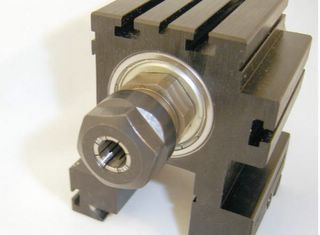I attended a day of school at the Lee Valley Tools downtown Toronto location. Trevor wanted to take this particular class and suggested that I come along, too. We made a traditional bow saw that uses 12" long, coping-style blades. A basic kit of parts (pins, blades, and plans) is available from Gramercy Tools and the class was taught by Steve Der-Garabedian of Black Walnut Studio. To speed the process, blanks were all pre-cut from quarter-sawn white ash. Nice, straight grain and strong as heck.
(The saw is known as a frame-saw, bow-saw, or turning-saw depending on where you're from)
Steve showed us the basic steps in the fabrication process, all the while ribbing me about the thousandths-of-an-inch precision that machinists are used to - woodworking can be delightfully free of ruler usage if you create part-to-part relationships as you go along. Steve has a very pleasant, easy-going style of instruction; I could see taking another course from him in the future.
A couple of mortises, some matching tenons, a pair of counterbored holes, and a bit of judicious planing later and each of us had a working bow saw that cut surprisingly well. There is room for prettying up the saw's "cheeks", stretcher, and toggle pieces through use of rasps and a spokeshave but it's ready to go as-is. I did spend some in-class time enhancing the toggle (adding a taper, cord notch and finial) as well as relieving the shoulders of the stretcher using a safe-edged file.
The saw will knock down into something you could pack into a knee sock, useful if you travel or only want one tool box to carry. If you want more choices of TPI and width, custom blades can be made by cutting lengths of bandsaw blades and drilling these for cross-pins. The brass stubs at the end of the blade will be fitted with a pair of turned handles as soon as I can arrange some time on a wood lathe. The blanks are made but there was no lathe available in the classroom yesterday.
I have, in the past, done a variety of woodwork both in school and as required at home. This class allowed me to rediscover some of the aspects of this type of work that I have been missing, and further reinforces my desire to learn even more traditional woodworking techniques.










